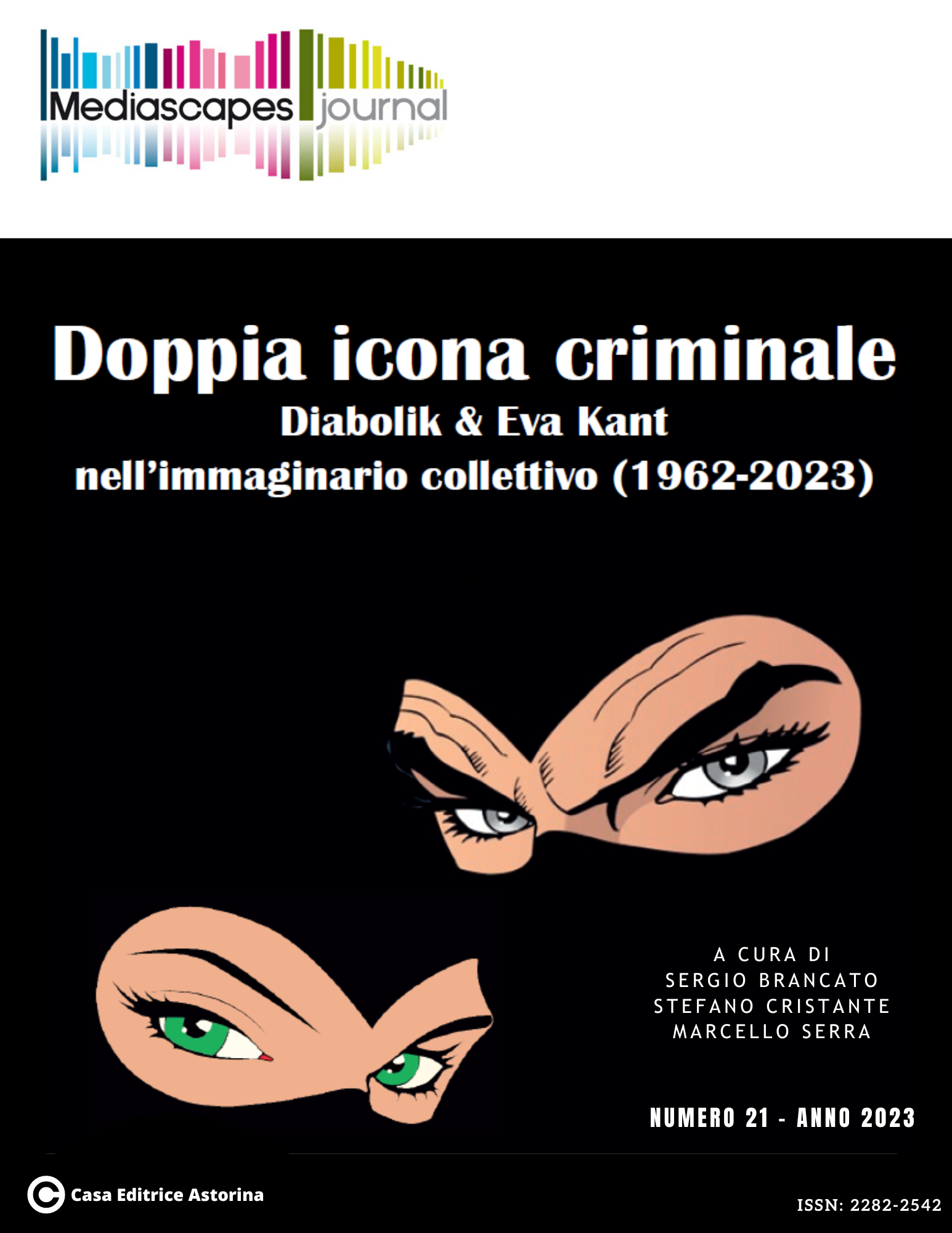Il gioco mentale del lettore nel mondo stilizzato di Eva e Diabolik
Keywords:
Diabolik, Eva Kant, fumetto italiano, identità, stilizzazione, maschereAbstract
This short essay intends to reflect on two elements that can help motivate Diabolik’s decades-long success: the first is the reader’s involvement in the realization of the thefts of the Diabolik-Eva Kant couple. In fact, the reader is called to participate in the preparation of the robberies which, despite all the precautions taken by the owners and the police, will be carried out by the two criminals. Diabolik’s technological superiority and ability to anticipate opponents’ moves allow him to react to any adversity, and to invariably surprise the reader, aware of the inevitable success of the enterprise even though the conditions of the narrative context seem to make it impossible every time.
The second crucial element of this serial comic is stylization, understood as supreme essentiality, both in the writing of the texts and in the graphic design, and which is also reflected in the characterization of the characters. The self of the actors in the series actually appears more connected to Goffman’s sociological explorations than to psychological dynamics: it will again be up to the reader to add – in the most authentic sense of comics as a cool medium – everything that in the events of the criminal couple is only stylized, making sure that a narrative ecosystem is outlined capable of continuous imperceptible variations and of a solid permanence in the mental game defined since the beginning.
Downloads
Published
How to Cite
Issue
Section
License

This work is licensed under a Creative Commons Attribution 4.0 International License.
Mediascapes Journal is published under a Creative Commons Attribution Licence 4.0.
With the licence CC-BY, authors retain the copyright, allowing anyone to download, reuse, re-print, modify, distribute and/or copy their contribution. The work must be properly attributed to its author. It should be also mentioned that the work has been first published by the journal Anuac.
Having published these contributions for the first time, Mediascapes Journal will have the right to publish them integrally or partially as reprints or possibly as part of a thematic issue, in both digital and printed format.
It is not necessary to ask further permissions both to author or the journal.


